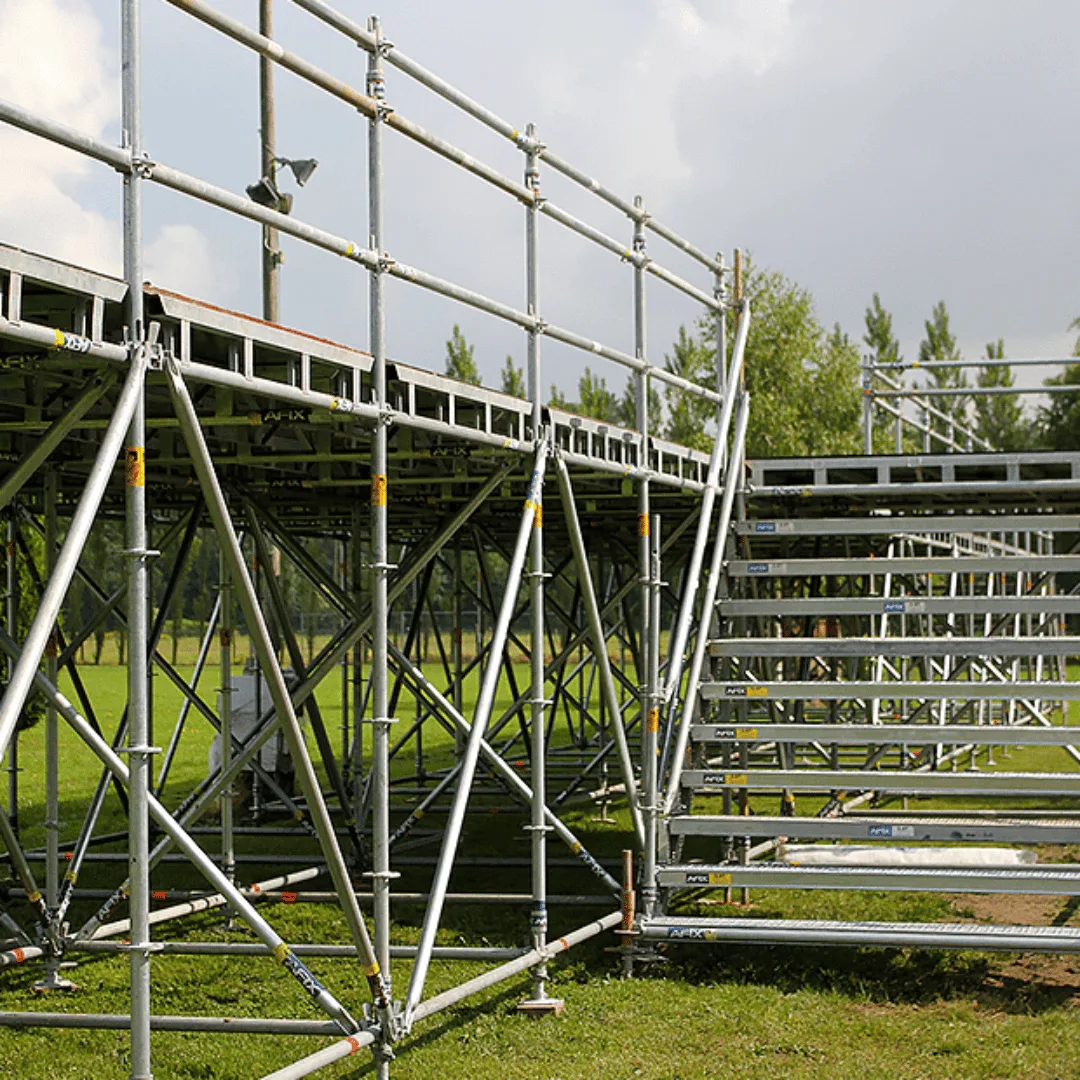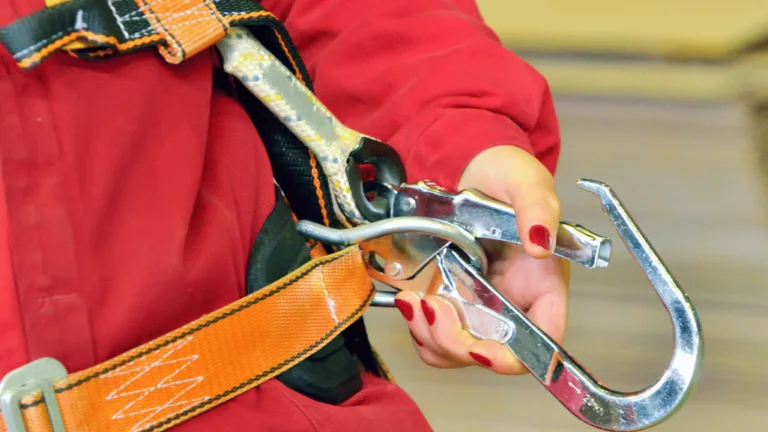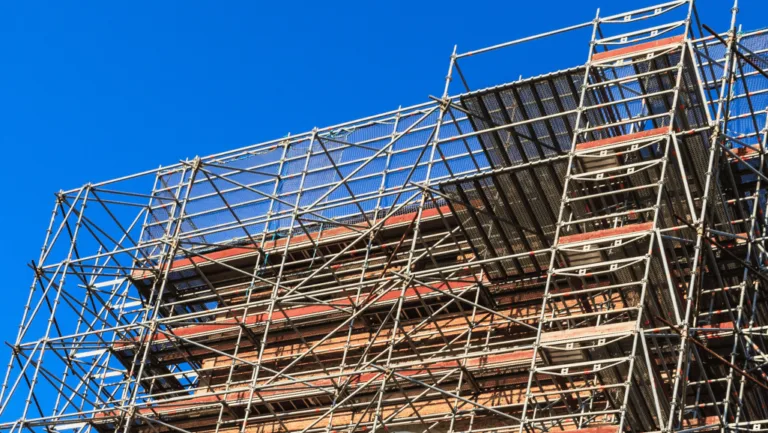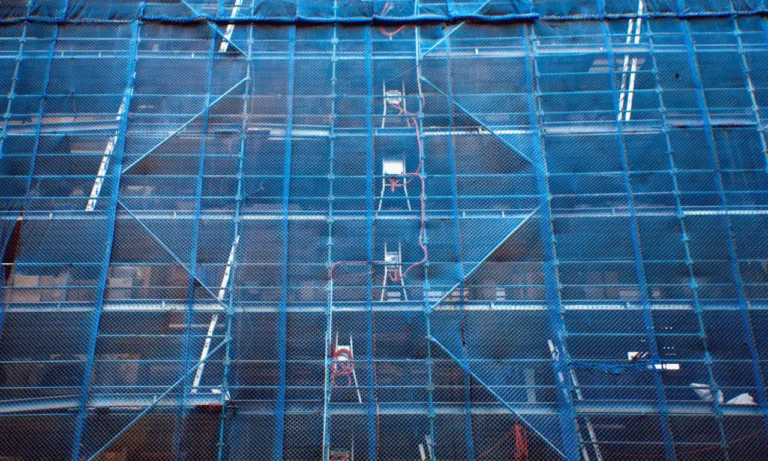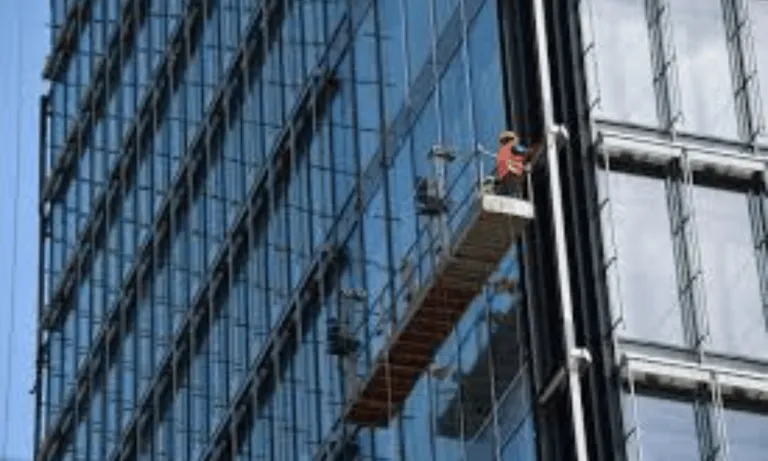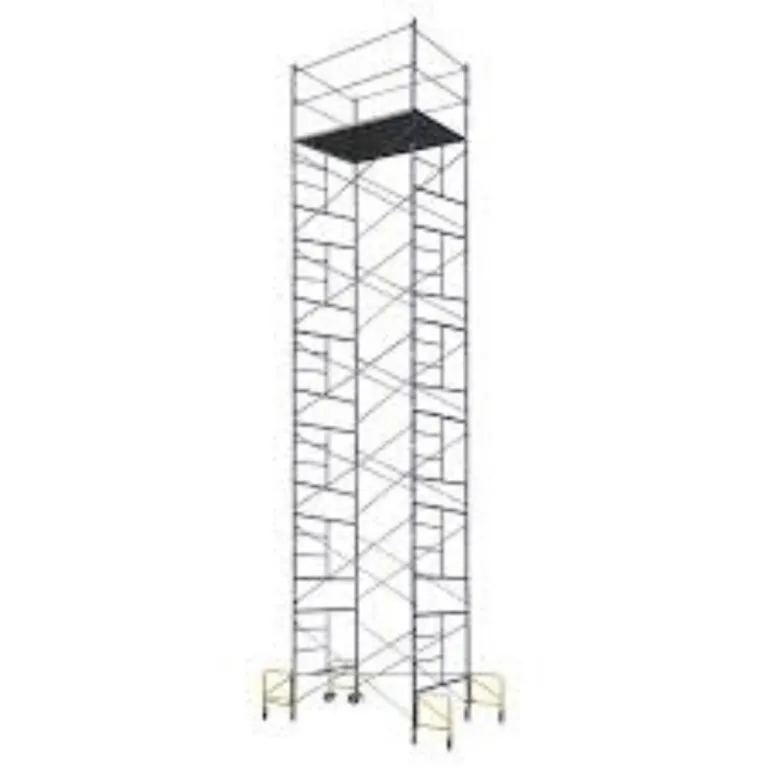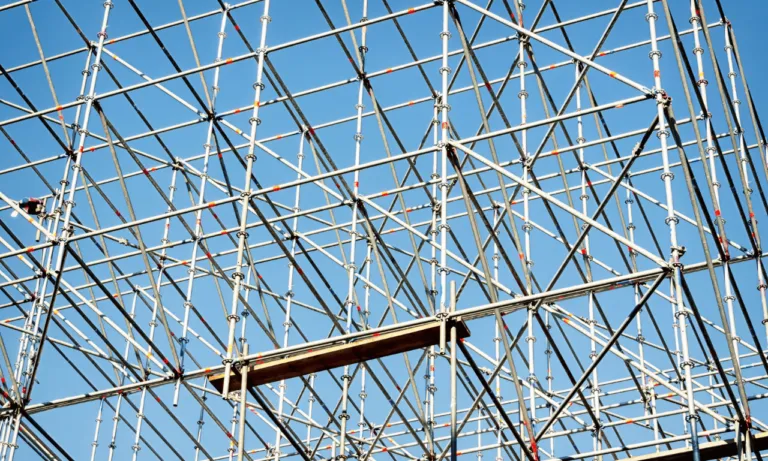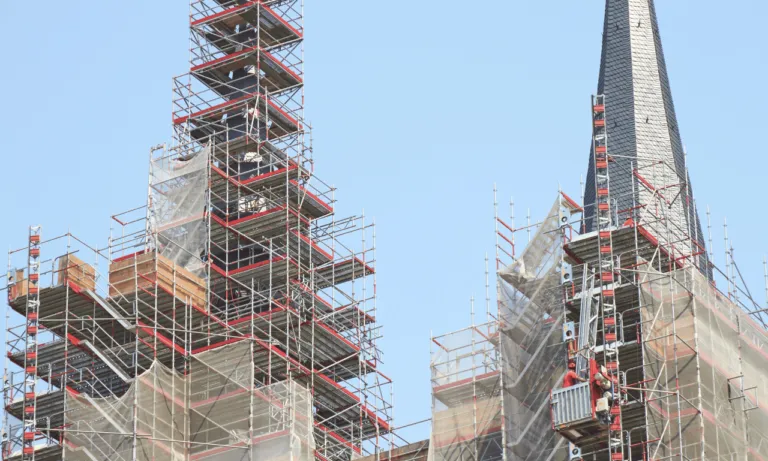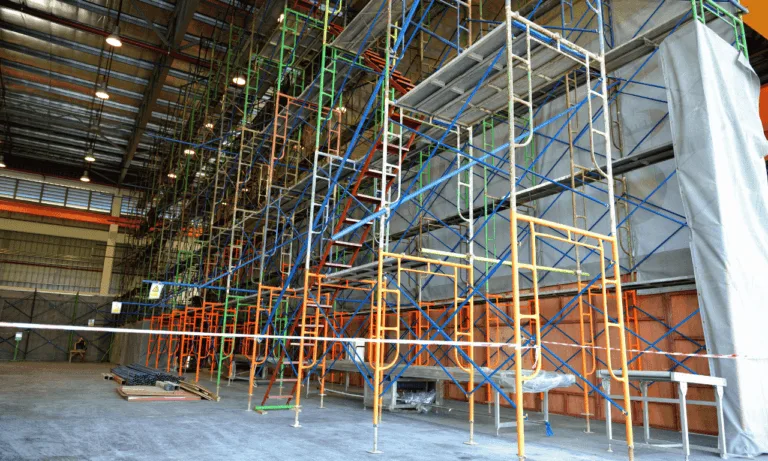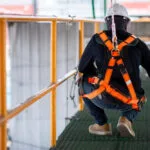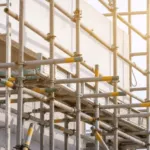Phone:
(+65)8319-0742
When it comes to construction work, scaffolding plays a vital role in ensuring safety and efficiency. However, it can also be a potential source of danger if not used correctly. This is why understanding the different stages of scaffolding is crucial for safeguarding the well-being of workers and preventing accidents on construction sites.
Construction scaffolding encompasses various aspects, including the types of scaffolding used, the materials employed, the design of the scaffold, and the inspection and maintenance procedures. Each stage contributes to the overall safety and stability of the structure, minimizing risks and promoting a secure working environment.
During scaffold construction, it is important to consider the specific needs of the project and select the appropriate type of scaffolding system. There are different types available, such as fabricated modular frame scaffolds, suspended scaffolds, and cantilever scaffolds, each designed for specific purposes and conditions.
The materials used for scaffolding should also be carefully chosen to ensure strength and durability. Common materials include steel, aluminum, and wood, each with its own advantages and considerations. The scaffold design should take into account the load-bearing capacity, the height and width requirements, and the ability to withstand external factors like weather conditions or vibrations.
Proper erection and assembly of the scaffold is another critical stage. It is essential to follow the manufacturer’s instructions precisely and avoid mixing components from different systems or manufacturers. By doing so, the stability and structural integrity of the scaffold can be maintained, minimizing the risk of accidents and collapses.
Regular inspections and maintenance are crucial to ensure that the scaffold remains safe and reliable throughout its lifespan. Inspections should be conducted by a competent person who has received adequate training and possesses the necessary knowledge and expertise to identify potential hazards or deficiencies. Periodic inspections help identify and address any issues promptly, preventing accidents and ensuring that the scaffold continues to meet safety standards.
By understanding and adhering to the scaffolding stages, construction companies can create a safe working environment, protect their workers, and enhance overall productivity. Training employees on the correct use of scaffolding and implementing proper safety protocols are key factors in maintaining a secure construction site.
Remember, safety should always be a priority in construction projects. By prioritizing scaffold safety and following the necessary stages, you can ensure the well-being of your workers and the success of your construction endeavors.
Key Takeaways:
- Scaffolding is crucial for construction safety but can be dangerous if not used properly.
- Understanding the different stages of scaffolding, including materials, design, erection, and inspection, is essential.
- Selecting the appropriate type of scaffolding system and materials is crucial for stability and durability.
- Proper erection and assembly of the scaffold, following instructions, and avoiding mixing components from different systems are vital.
- Regular inspections and maintenance are necessary to ensure the ongoing safety of the scaffold.
Importance of Training for Scaffolding Safety
Training plays a critical role in ensuring the safe use of scaffolding in construction projects. Both competent person training and worker training are essential components of scaffolding safety.
Competent Person Training
Competent person training focuses on individuals who oversee and coordinate scaffolding activities. These individuals are responsible for ensuring that scaffolds are erected correctly and that all safety measures are in place. Their training equips them with the knowledge and skills to assess scaffold designs, identify potential hazards, and make informed decisions to mitigate risks.
Worker Training
Worker training is essential for anyone who works on scaffolds. This training emphasizes the correct use of scaffolds, handling of materials and tools, and the importance of load ratings and fall-protection equipment. Workers learn how to assemble and disassemble scaffolds safely, navigate platforms, and utilize personal protective equipment (PPE) effectively.
Updating Training
As scaffolding structures may change or tasks performed on them may vary, it is crucial to update training accordingly. Any updates to the scaffold’s structure, such as modifications or additions, should be accompanied by proper training to ensure workers are knowledgeable and competent in working with the updated scaffold.
By investing in comprehensive training programs, construction companies can enhance safety awareness and promote a culture of responsible scaffold usage among their employees.
Following Instructions for Scaffolding Stability

When it comes to scaffolding, following instructions is crucial for ensuring stability and safety. By adhering to the guidelines provided by manufacturers and engineers, construction workers can avoid incidents and minimize the risk of accidents. One important instruction is to **not mix components** from different manufacturers or systems. This is because each system is engineered differently, and combining incompatible components can compromise the overall stability of the scaffold.
Another key consideration for scaffold stability is the **scaffold structure** itself. The rule of thumb is that scaffolds become unstable when the overall height is four times the length of the shortest part of the base. By maintaining the proper proportions and dimensions, the scaffold can maintain its stability even at greater heights.
Furthermore, **scaffold assembly** plays a critical role in ensuring stability. It is essential to carefully follow the assembly instructions provided by the manufacturer, ensuring that all components are securely and correctly connected. This includes properly installing bracing and cross bracing to reinforce the scaffold’s structural integrity.
The condition of the **base** is also a crucial factor in scaffold stability. The scaffold must have a firm and level foundation to ensure its stability during use. Any unevenness in the ground or unstable base condition can compromise the scaffold’s integrity and pose safety risks.
Lastly, it is important to consider the impact of **extreme weather conditions** on scaffold stability. Adverse weather such as strong winds, heavy rain, or snow can affect the stability and safety of the scaffold. In such cases, it is crucial to follow specific instructions or guidelines for working in extreme weather conditions and take necessary precautions to ensure safety.
The image above depicts a scaffold structure that exemplifies the importance of following instructions for scaffold stability. By adhering to proper assembly techniques, avoiding component mixing, and considering base conditions and extreme weather, construction workers can ensure a stable and safe scaffolding system.
Hazards Associated with Scaffolding
When working with scaffolding, it’s important to be aware of the hazards involved to ensure a safe working environment. Several risks are associated with scaffolding, including falls, electrocution, head injuries, weather conditions, and access to and from the scaffold.
Falls are one of the biggest hazards when working with scaffolding, especially when working at heights. To prevent falls, guardrails or fall-protection equipment should be installed on scaffolds that are above ten feet. This ensures that workers have a safe and secure platform to work on, reducing the risk of accidents and injuries.
Another hazard to consider is the proximity of scaffolds to power lines. Scaffolds near power lines can pose a significant electrocution hazard. It’s crucial to maintain a safe distance from power lines and follow proper safety protocols when working near electrical sources.
Head injuries are also a concern when working with scaffolding. Overhead lines or objects can come into contact with workers’ heads, causing serious injuries. Proper head protection should be worn, and workers should be cautious of their surroundings to avoid any potential hazards.
Weather conditions can also impact the safety of scaffolds. Wet or icy platforms can lead to slips and falls, increasing the risk of injuries. It’s important to ensure that scaffolds are properly maintained and that workers have appropriate footwear and fall-protection equipment when working in adverse weather conditions.
Access to and from the scaffold is another area that poses hazards. Uneven or unstable surfaces, poorly designed access points, or lack of proper ladders can make accessing and exiting the scaffold dangerous. It’s essential to provide safe and secure access points to prevent slips, trips, and falls.
Being aware of and proactive in addressing these hazards is crucial for ensuring the safety of workers and the success of construction projects.
| Hazard | Preventive Measures |
|---|---|
| Falls | – Install guardrails or fall-protection equipment on scaffolds above ten feet. – Provide adequate training on working at heights and proper use of fall-protection equipment. |
| Electrocution | – Maintain a safe distance from power lines. – Follow electrical safety protocols. – Use non-conductive materials for scaffolding components. |
| Head Injuries | – Wear proper head protection. – Be cautious of overhead lines and objects. – Create a clear safety perimeter around scaffold work areas. |
| Weather Conditions | – Regularly inspect and maintain scaffolding to prevent water accumulation. – Provide workers with appropriate footwear for different weather conditions. – Use slip-resistant platforms and surfaces. |
| Access to and from the Scaffold | – Ensure stable and secure access points. – Use proper ladders and stairs for safe ascent and descent. – Clear obstructions and provide adequate lighting in access areas. |
Using a Tagging System for Scaffold Safety

When it comes to scaffold safety, effective communication is essential. That’s where a scaffold tagging system comes into play. By utilizing color-coded tags, workers can quickly and easily identify the safety status of scaffolds, ensuring they are used safely and appropriately.
The tagging system includes three different color tags, each indicating a specific condition of the scaffold:
- The Green Tag: A green tag signifies that the scaffold is safe for use. When workers see a green tag, they can proceed with confidence, knowing that the scaffold has undergone a thorough inspection and is in compliance with safety regulations.
- The Red Tag: A red tag indicates that the scaffold should not be used due to erection or other problems. When workers spot a red tag, they should immediately refrain from using the scaffold and report the issue to their supervisor. Safety is paramount, and red tags serve as a clear warning to prevent accidents or injuries.
- The Yellow Tag: A yellow tag provides specific instructions and conditions for safe scaffold use. This could include the need for fall protection or other precautions that workers must follow to ensure their safety. Yellow tags ensure that workers are aware of any potential hazards associated with specific sections of the scaffold.
In addition to the tagging system, regular scaffold inspections are crucial for maintaining safety. Inspections should be conducted by qualified individuals who are knowledgeable about scaffold safety and potential hazards. They should be aware of warning signs, trip hazards, and other safety concerns that may arise. By regularly inspecting scaffolds, potential issues can be identified and addressed promptly, minimizing the risk of accidents or injuries.
Remember, a scaffold tagging system is a valuable tool in promoting safe scaffold use. It provides clear visual communication to workers and helps them make informed decisions. By utilizing the color-coded tags, workers can easily identify the safety status of scaffolds, contributing to a safer work environment.
Scaffold Tagging System Example
| Color Tag | Meaning |
|---|---|
| Green Tag | The scaffold is safe for use, complying with all safety regulations. |
| Red Tag | The scaffold should not be used due to erection or other problems. Report the issue to a supervisor. |
| Yellow Tag | Specific conditions and precautions for safe scaffold use. Follow instructions on the tag. |
Regular Inspections for Scaffold Safety

Regular inspections play a vital role in ensuring the safety of scaffolds on construction sites. These inspections are essential for identifying potential hazards, ensuring structural integrity, and maintaining a safe work environment. A competent person should be responsible for conducting daily inspections and closely monitoring changing weather conditions that can impact scaffold stability.
During inspections, it is important to consider the specific activities performed on the scaffold, as different tasks may introduce unique safety risks. The integrity of the work platform, including its decking, guardrails, and access points, should be carefully examined to ensure they meet safety standards and can support the intended load.
Furthermore, inspections should assess the overall structure of the scaffold, including the stability of its base, its connections, and the proper installation of bracing elements. Any signs of damage, such as cracks, rust, or wear and tear, should be identified and addressed promptly to maintain the scaffold’s structural integrity.
Regular scaffold maintenance is also crucial for ensuring safety. This includes routine checks for damaged components like couplers, guardrails, and platforms, as well as timely replacement to prevent hazardous situations. Proper scaffold maintenance contributes to preventing accidents and prolonging the scaffold’s lifespan.
| Inspection Checklist | Frequency |
|---|---|
| Daily inspections by a competent person | Daily |
| Check for changing weather conditions | Daily |
| Assess work platform integrity | Daily |
| Inspect scaffold structure and connections | Daily |
| Check for damaged components | Daily |
| Perform routine maintenance and repairs | As needed |
By prioritizing regular inspections and maintenance, construction teams can ensure the safety and stability of scaffolds, mitigating potential risks and creating a secure work environment for all workers.
Respecting the Complexity of Scaffolds
Scaffolding plays a crucial role in construction projects, providing workers with a safe and stable platform to perform their tasks. While scaffolds may appear simple on the surface, their design and engineering involve complex calculations and considerations to ensure their structural integrity. By respecting the complexity of scaffolds, companies can prioritize safety, reduce injuries, and prevent equipment damage.
One of the key aspects of respecting scaffold complexity is proper supervision. It is essential to have trained professionals overseeing scaffold erection and use to ensure adherence to safety protocols and standards. Supervision helps identify potential risks and hazards, enabling timely intervention and injury prevention. Regular inspections and maintenance also contribute to scaffold safety, as they help identify any structural issues or component damage that could compromise the stability of the scaffold.
Reducing injuries is a top priority in construction, and proper training plays a critical role in achieving this goal. Companies invest in providing comprehensive training programs for workers involved in scaffold-related activities. Through training, workers learn how to properly assemble, use, and dismantle scaffolds, reducing the risk of accidents and injuries. Training also covers topics such as load capacities, fall protection, and recognizing hazards, ensuring workers have the knowledge and skills necessary for safe scaffold operations.
Engineering is a fundamental aspect of scaffold design and construction. Scaffold systems must be engineered and manufactured to support specific loads, considering factors such as the height, type of work being performed, and environmental conditions. By investing in engineering expertise, companies can ensure that their scaffolding meets safety standards and regulations, minimizing the risk of accidents.
The Importance of Proper Training
Proper training is vital for ensuring the safe use of scaffolds and minimizing the potential for injuries and accidents. Workers must undergo comprehensive training programs that cover topics such as scaffold assembly, inspection, and safe work practices. They should also receive training on the correct use of personal protective equipment (PPE) and fall-protection systems, as well as the recognition and avoidance of potential hazards.
Training programs should be ongoing, ensuring that workers receive refresher courses to reinforce their knowledge and skills. Additionally, training should be provided whenever there are changes in scaffold design, equipment, or work procedures. By investing in proper training, companies demonstrate their commitment to safety and safeguard the well-being of their workers.
Reducing Equipment Damage
Scaffolding complexity goes beyond its design and engineering. It also includes the proper handling and use of equipment to prevent damage. Workers need to be trained on how to handle scaffold components, tools, and materials safely. Mishandling or improper use of equipment can lead to damage, compromising the scaffold’s stability and safety.
Furthermore, workers should be aware of the load capacities of scaffolds and strictly adhere to these limits. Overloading a scaffold can cause equipment failure and increase the risk of accidents. By respecting the complexity of scaffolds, workers are more likely to take the necessary precautions to prevent equipment damage and ensure the scaffold’s safe operation.
Different Types of Scaffolding for Construction Projects
When it comes to construction projects, there are various types of scaffolding available to meet different needs and requirements. Understanding the different types can help you choose the right scaffolding system for your project. Let’s explore some of the commonly used types:
Fabricated Modular Frame Scaffold
The fabricated modular frame scaffold is the most widely used type of scaffolding in the construction industry. It offers versatility, durability, and quick assembly, making it suitable for a wide range of projects. This type of scaffold consists of frames, cross braces, and planks, allowing for easy customization and adjustment.
Suspended Scaffold
Suspended scaffolds are often used for working on large vertical structures like tall buildings or bridges. This type of scaffold is suspended from the top, allowing workers to access different levels while working. It is typically used in situations where traditional scaffolding is not feasible or practical.
Cantilever Scaffold
Cantilever scaffolds are designed to provide support on sloped surfaces, such as building facades or bridges with varying angles. This type of scaffold extends horizontally from a fixed base, allowing workers to access and work on hard-to-reach areas safely.
Access Ladders
Access ladders are an important component of scaffolding systems, providing a safe means for workers to climb up and down the scaffold. They are designed to be sturdy and stable, ensuring easy and secure access to different scaffold levels.
Adjustable Scaffolding
Adjustable scaffolding systems are flexible and adaptable, allowing for height adjustment and customization based on the project’s specific requirements. This type of scaffold is ideal when working on uneven surfaces or when different platform heights are needed.
Choosing the right type of scaffolding for your construction project is crucial for ensuring safety, efficiency, and productivity. Understanding the different types available and their specific applications can help you make an informed decision and create a secure working environment for your team.
Steps for Setting Up Scaffolding Properly
Proper setup of scaffolding is crucial for ensuring safety and stability on construction sites. This section will outline the step-by-step process for setting up scaffolding, from preparation to safety checks.
1. Obtain Permits and Approvals
Before starting any scaffolding work, it is important to obtain the necessary permits and approvals from local authorities. This ensures compliance with regulations and helps prevent any legal issues down the line.
2. Scaffold Design and Planning
Once permits are in place, it’s time to design and plan the scaffold structure. Take into account the specific requirements of the project, including height, load capacity, and any special considerations.
3. Prepare the Scaffold Base
The scaffold base serves as the foundation for the entire structure. Ensure that the ground is level and stable before setting up the base plates or adjustable legs. This will provide a solid and secure footing for the scaffolding.
4. Assemble the Vertical Poles
Vertical poles, also known as uprights or standards, form the vertical support system of the scaffold. Follow the manufacturer’s instructions for safely assembling and connecting the poles, ensuring they are properly secured and braced.
5. Install the Scaffold Platforms
Once the vertical poles are in place, it’s time to install the scaffold platforms. These horizontal walkways provide a safe working area for construction workers. Place the platforms at appropriate intervals, ensuring they are level and securely attached to the uprights.
6. Set Up Access Ladders
Access ladders are an essential component of scaffolding setups, providing safe and convenient entry and exit points. Install access ladders at strategic locations, ensuring they are securely attached and provide easy and stable access to the scaffold platform.
7. Conduct Safety Checks
Prior to using the scaffold, it is crucial to conduct thorough safety checks. Inspect the entire structure for any defects, loose connections, or potential hazards. Ensure all guardrails, toe boards, and safety equipment are in place and functioning properly.
8. Regular Maintenance and Inspections
Once the scaffold is set up, it is important to prioritize regular maintenance and inspections. Regularly inspect the scaffold to identify and address any potential issues. Maintain a schedule for cleaning, repairing, and replacing components to ensure the ongoing safety and stability of the structure.
By following these steps and taking the necessary precautions, construction professionals can set up scaffolding properly, promoting safety and stability on the job site.
| Steps for Setting Up Scaffolding Properly |
|---|
| 1. Obtain Permits and Approvals |
| 2. Scaffold Design and Planning |
| 3. Prepare the Scaffold Base |
| 4. Assemble the Vertical Poles |
| 5. Install the Scaffold Platforms |
| 6. Set Up Access Ladders |
| 7. Conduct Safety Checks |
| 8. Regular Maintenance and Inspections |
Conclusion
Scaffolding safety is of utmost importance in the construction industry. By adhering to safety regulations and implementing proper setup, regular inspections, and technical expertise, construction companies can ensure worker well-being and prevent accidents. Proper scaffolding stages play a crucial role in maintaining construction efficiency, as they provide a safe and stable work platform for workers to operate on.
It is essential to treat scaffolding with respect and recognize its complexity. All employees involved in its use should receive adequate training to understand the intricacies of scaffold assembly, maintenance, and safe usage. Compliance with regulations and industry best practices is necessary to ensure a secure working environment.
Regular inspections and proper training are key components of scaffolding safety. Regular inspections help identify potential hazards and ensure that the scaffold remains in good condition. Ongoing training programs equip workers with the knowledge and skills necessary to navigate scaffolding systems safely, while technical expertise ensures that scaffolds are designed and set up correctly.
By prioritizing safety in scaffolding, construction projects can be completed efficiently and effectively, without compromising the well-being of workers. Adherence to safety regulations, proper setup, regular inspections, and training are the pillars of a successful scaffolding program, promoting a culture of safety in the construction industry.
FAQ
What are the different types of scaffolding used in construction?
The different types of scaffolding used in construction include the fabricated modular frame scaffold, suspended scaffold, cantilever scaffold, access ladders, and adjustable scaffolding.
Why is training important for scaffolding safety?
Training is important for scaffolding safety because it ensures that workers understand the correct use of scaffolds, handling of materials and tools, load ratings, and fall-protection equipment.
What should I consider to ensure the stability of scaffolding?
To ensure the stability of scaffolding, it is important to follow instructions, avoid mixing components from different manufacturers, and pay attention to the scaffold’s structure, base condition, and extreme weather conditions.
What are the hazards associated with scaffolding?
The hazards associated with scaffolding include falls, electrocution, head injuries, weather conditions, and access to and from the scaffold.
How can a tagging system improve scaffold safety?
A tagging system can improve scaffold safety by providing clear communication about the scaffold’s condition through green tags (safe for use), red tags (not safe for use), and yellow tags (specific conditions for safe use).
Why are regular inspections important for scaffold safety?
Regular inspections are important for scaffold safety because they help identify any issues or deterioration, ensure structural integrity and work platform safety, and allow for timely maintenance and replacement of damaged components.
How should the complexity of scaffolds be respected?
The complexity of scaffolds should be respected by ensuring proper supervision of scaffold erection and use, investing in engineering expertise, and providing adequate training to all employees involved in scaffolding.
What are the steps for setting up scaffolding properly?
The steps for setting up scaffolding properly include obtaining necessary permits and approvals, complying with regulations, preparing the scaffold base, assembling vertical poles, installing platforms, setting up access ladders, and conducting safety checks.

